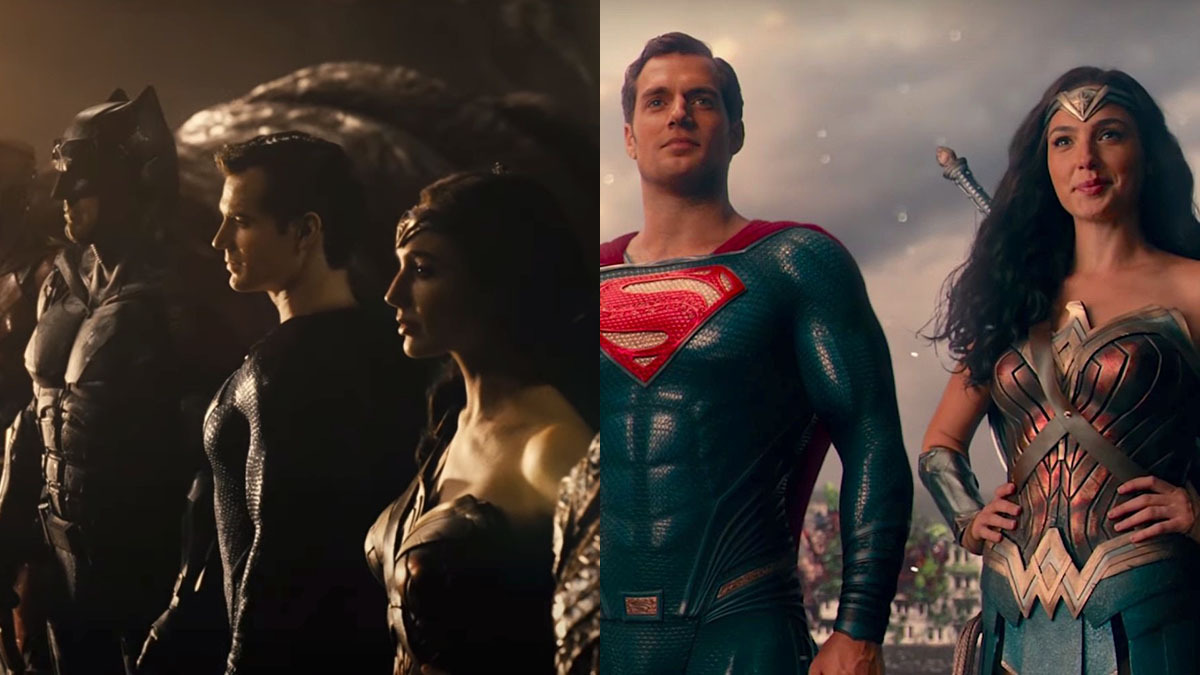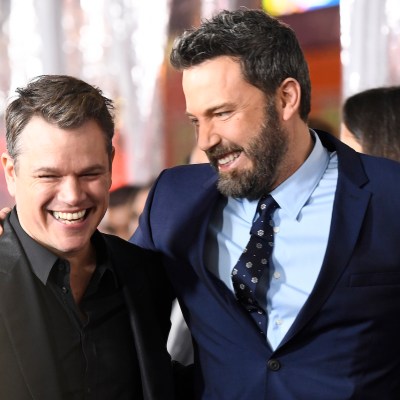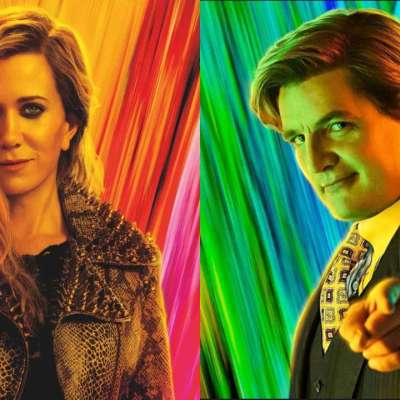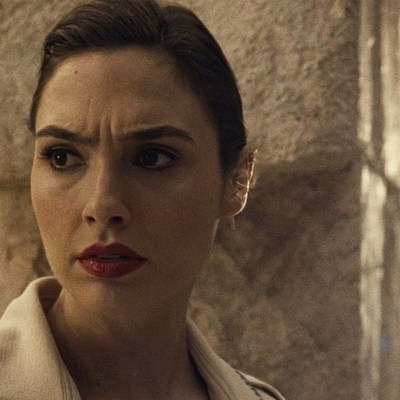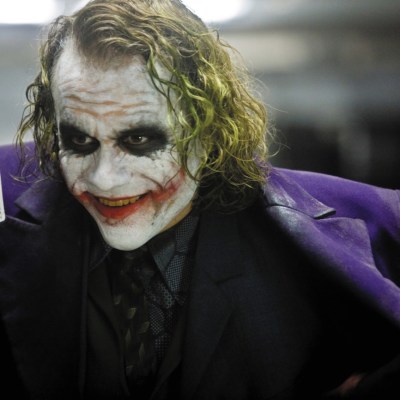This article contains Zack Snyder’s Justice League spoilers.
Whether you love or hate his style, there is no denying Zack Snyder is an original. From 300 to Watchmen, and Man of Steel to Justice League, his characters often hover above the screen as much as occupy it. They’re mythic figures who’ve stepped off a Botticelli canvas, or at least Frank Miller comic book panels, and they’re imbued with such a sense of scale from their director that the aesthetic is nigh impossible to duplicate. That is only clearer now thanks to Zack Snyder’s Justice League, a restored four-hour edit of Snyder’s original vision for the DC superhero movie team-up and their universe at large.
Admittedly, you’ve seen the movie’s tale before, back when Warner Bros. released a truncated, heavily reshot version into theaters in 2017. But that two-hour theatrical cut of Justice League, assembled by director Joss Whedon, really is a night and day different film. It shares many of the same scenes and story beats, but it lacks Snyder’s singular grandiosity and tonal consistency.
Comparing all the significant changes between the two versions—which we’ll hereby distinguish as the “Snyder Cut” and “Whedon Cut”—creates a fascinating juxtaposition of the different choices filmmakers can make with similar material, as well as the drastically disparate visions the directors had for these six superheroes and the larger DC Extended Universe. So join us as we contrast all the major changes (and by and large improvements) made by Zack Snyder’s Justice League.
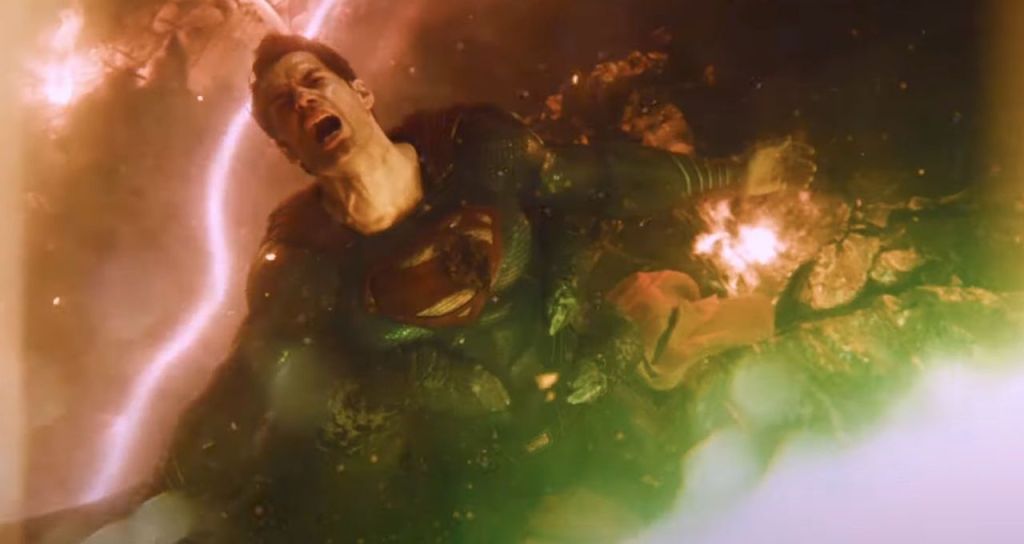
The Opening
One of the most surprising changes made by the Snyder Cut comes immediately. Back when the ostensible Whedon Cut of Justice League opened in theaters, one thing many assumed was unchanged from Snyder’s vision was the opening credits. With imagery clearly filmed by the director—including unused footage from the Superman funeral sequence in Batman v Superman: Dawn of Justice—the downbeat credits were edited to Singrid’s rendition of “Everybody Knows,” a cover of a song from one of Snyder’s favorite musicians, Lenoard Cohen. I’m also fairly certain only Snyder would film a homeless man with a cardboard sign saying “I tried” in a superhero movie (the destitute figure may still appear in the Snyder Cut in an overhead shot when Cyborg is later surveying the bleakness of the world).
Indeed, quite a bit of the Whedon Cut’s opening credits scenes are used elsewhere in Zack Snyder’s Justice League, including breathtaking imagery of the Superman symbol draped in black over London’s Tower Bridge. But the new edit foregoes a traditional opening credits sequence for a more restrained montage that returns to the climax of Batman v Superman, and to the moment when Henry Cavill‘s Superman dies. In pained slow-motion, we again experience the moment of Doomsday’s spike piercing Superman’s heart and see how his scream reverberates throughout the world.
The Snyder Cut is more directly linked to the previous movie with Jesse Eisenberg’s Lex Luthor, complete with hair, hearing Superman’s cries from deep in the bowels of the Kryptonian ship. Meanwhile the echoes of Clark’s anguish reverberate all the way past Zeus’ magical cloak to Themyscira where the Amazons (rather impressively) have an entire army guarding the Mother Box they obtained 5,000 years ago. When the Mother Box hears Kal-El’s death rattle, it begins to crack, drawing a terrified Amazonian closer to its new glowing light.
And finally, we end with the cries being heard by Cyborg. It is on the image of a hunched over Ray Fisher that Snyder chooses to include his “directed by” title card, indicating a strong sense of solidarity with the character and the actor who plays him after Cyborg was largely sidelined in the Whedon Cut. Clearly this is going to be a different movie.
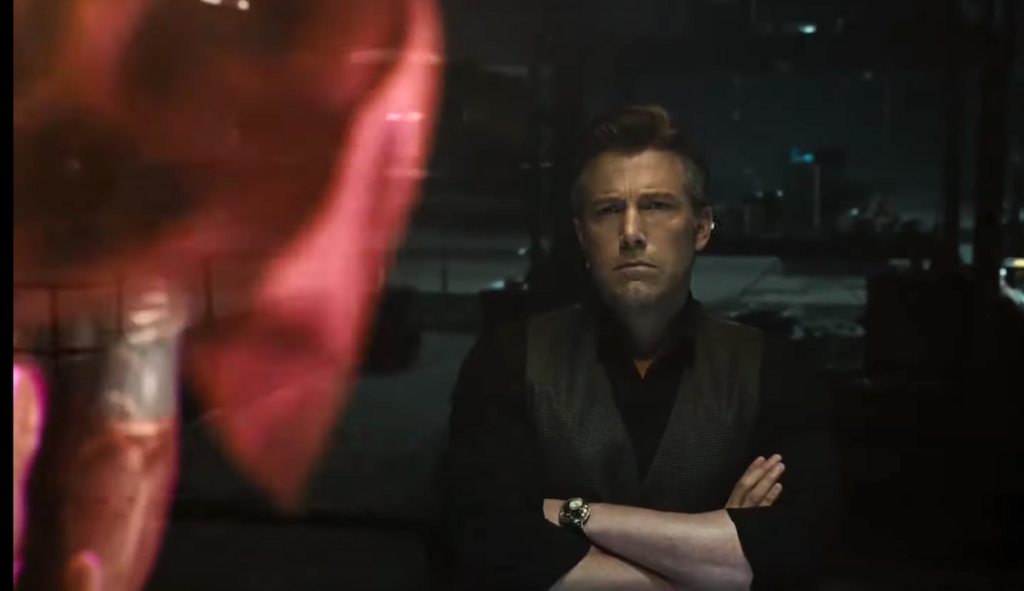
Batman
Ben Affleck’s Bruce Wayne remains the focal point, at least in terms of leadership, of both the Snyder and Whedon cuts of the film. But right down to how they’re introduced, these are subtly diverging interpretations of the character. In the Whedon Cut, Batman has the first scene of the movie that isn’t shot on an iPhone. It gets Affleck in costume immediately and features archetypal Gotham City imagery as Batman uses a criminal as bait for a Parademon, an alien from the planet Apokolips that Batman is already familiar with. He’s so aware of these creatures that Batman ignores the thief spelling out the subtext of Justice League’s first act: With Superman dead, where does that leave us?
By contrast, you intrinsically feel that absence in the Snyder Cut. Whereas Whedon and WB got Batman in the costume faster for a tongue-in-cheek action sequence with screaming crooks and flying aliens, Zack Snyder’s Justice League ignores the Batsuit for a clean two hours. Instead, it opens with Bruce Wayne already “north” in a remote part of Europe near the arctic. We get the impression he’s been traveling for weeks on a horse and over mountains, sporting a bushy beard as he reaches the fishing village Arthur Curry (Jason Momoa) has provided supplies to.
The scene where Batman meets Aquaman is more or less the same, but tonally Snyder evokes a funereal quality by letting the scene breathe in Bruce’s desperation instead of Arthur’s flippancy. And rather than Bruce noticing an inserted mural of Mother Boxes being what upsets Arthur, it’s Bruce pulling a trick from Momoa’s on screen wife on Game of Thrones which sets Aquaman off: he reveals after his hosts have made fools of themselves that he too can speak Icelandic. (There is also no longer a joke where Bruce says, “I hear you can talk to fish.”)
This somber opening is strikingly different and a vast improvement (see the Aquaman section for more). After Arthur rebuffs Bruce’s request to team-up, Bruce’s defeated return trip home is also subtly changed. For starters, we see his journey to his private jet where Alfred is waiting. In the Whedon Cut, the pair’s conversation after Bruce has shaved is a reshot sequence with some admittedly amusing character-building dialogue, like Alfred saying, “I miss the days when one’s biggest concern was exploding wind-up penguins.” The Snyder Cut’s version is more expository and ominous. As neither has seen a Parademon yet in this version, Alfred doubts whether Bruce needs to build a team based on the ravings of a now incarcerated and visibly insane Lex Luthor. Batman says he isn’t just doing this based on Luthor.
“I made a promise to him on his grave,” Bruce broods about the Kryptonian alien he hounded to near death in the last movie.
The next time we see Bruce Wayne is in a scene that appeared in the Whedon Cut, if slightly different. It’s when Gal Gadot’s Diana Prince breaks into his “building” with million-dollar security. However, the Whedon Cut led viewers to believe this airplane hangar-like space was the Batcave (even though it visually looks quite different). The Snyder Cut confirms it is a decrepit warehouse near the docks in Gotham harbor. Gone also is the cheeky line, “Yeah, it looked expensive,” from Diana when Bruce mentions the cost of his security equipment.
Read more
In this off-site Batcave area, it’s also established by Alfred that he and Bruce Wayne have built new gauntlets that absorb energy (they come in especially handy later when they save Bruce from Superman’s heat ray vision).
The first time the gauntlets are used occurs when Batman leads a nascent Justice League beneath the tunnels of Striker Island in Gotham harbor. Up until that point, most of Affleck’s scenes remain the same, even if they breathe or are edited slightly differently. Batman recruits Barry Allen (Ezra Miller) to join the Justice League while talking about competitive ice dancing, and looks positively exhausted when Barry sees the Bat-Signal. The early Commissioner Gordon scenes are also the same, albeit now without composer Danny Elfman’s Batman theme from 1989.
In the tunnels, Batman’s scenes diverge again though. There is more of the misterioso act when Victor Stone (Cyborg) says, “I heard about you. Didn’t think you were real.” The Dark Knight answers, “I’m real when it’s useful.” Additionally, Batman doesn’t really mentor the Flash in this sequence or in any other going forward. Gone is the Flash admitting he’s terrified at seeing Steppenwolf and Bruce advising he “save one” person and will then know what he needs to do.
Instead, the Flash says, “I guess that’s the bad guy” in the Snyder Cut, and Batman stoically responds, “Good guess.” Bruce also drops his sense of humor, losing some solid bits like “Sorry guys, I didn’t bring a sword” when the Knightcrawler starts shooting up Parademons. Now he simply says, “My turn.”
However, Bruce remains the stoic team leader, harnessing a steadier team dynamic. There are no insert shots of Commissioner Gordon telling Batman it’s good to see he’s playing well with others after the Striker Island fight, and rather than berate Wonder Woman and his team members into bringing Superman back from the dead, Bruce and the rest come to the same conclusion, silently.
During the sequence where Cyborg reveals the Mother Box can bring Superman back from the dead, no one says Kal-El’s name out loud. The Flash even asks, “Is everyone thinking it or am I going to have to say it?” The camera pans around the table and lands on Bruce, who is watching Cyborg’s projected image of Superman’s cape. It’s a nice moment for Affleck, who looks much more alert in this version than the Whedon Cut. The dialogue in the Snyder Cut can often be perfunctory and expository, but the vast four-hour running time leaves room for the actors to indulge in quiet moments. The only person who doubts the idea is Alfred who in another scene warns Bruce, “If you can’t bring down a charging bull, then don’t wave the red flag.”
Batman counters, “I’m operating on complete faith now.” Quite the about face from the last movie.
The team otherwise staying on the same page, even after the Superman fiasco (more on that below), is a stark difference with the Whedon Cut. Here Bruce invites the team into the Batcave proper after they lose all three Mother Boxes, with teammates regrouping; in the Whedon Cut there is a strained attempt to create tension. Particularly between Bruce and Diana….
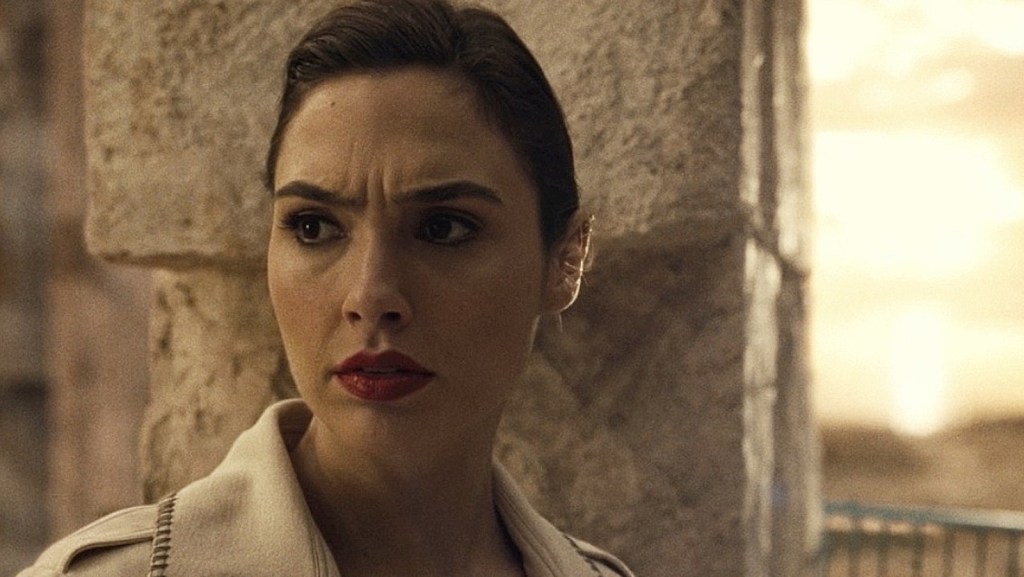
Wonder Woman
Gal Gadot has spoken in the past about how she was unhappy with the Justice League reshoots. While still not knowing the full details of what occurred behind the scenes, Zack Snyder’s Justice League makes apparent why she’d be disappointed with the direction of her added scenes.
To be fair, Wonder Woman is still objectified to a certain degree in the Snyder Cut. Her non-warrior attire still revolves around several low-cut dresses, and there is still a (much more understated) flirtation between Diana and Bruce. In an early scene of her and Bruce discussing their prospective teammates in front of a computer—with an awkward stab at humor where she coaxes out of Bruce that Arthur said no—there’s a moment where their hands trip over the mouse at the same time, like they’re in a teenage rom-com. Similarly, when Barry and Victor are digging up Clark Kent’s grave, Barry asks Victor if he thinks Wonder Woman would “be into younger guys.” Victor dismisses the thirstiness by saying, “Barry, she’s 5,000 years old. Every guy’s a younger guy.”
But these moments are few and far between. In the Whedon Cut, they’re constant with Alfred teasing Bruce about Batman inviting Wonder Woman to a candlelit team-up dinner, and a gross gag where Flash saves Wonder Woman during the Striker Island fight but then awkwardly lands on top of her body and gets flustered. Perhaps most frustratingly though, her character arc is reduced to a lot of flirting with Bruce, and coming to see he is right when he chastises her for “still being hung up” on Steve Trevor. She then helps him undress from his armor and shares a drink with him, like co-workers with a forced “will they or won’t they” chemistry.
All of that is gone in the Snyder Cut, which instead focuses on presenting Wonder Woman as the most ferocious and noble of the film’s six superheroes.
Her first scene is much the same as in the Whedon Cut, although it’s another film school-ready example for what a difference post-production makes. We see a group of eco-terrorists take a school group hostage, and Wonder Woman stops them. But in the Whedon Cut, the scene is nimble and brightly colored with a tongue-in-cheek quality, right down to the way Elfman uses an orchestra to play Hans Zimmer’s previously electric “Wonder Woman” theme. In the Snyder Cut, the sequence lasts nearly eight minutes in a desaturated, gray color scheme. The sadism with which the terrorists want to kill their hostages is belabored, and Junkie XL uses a fearsome version of Zimmer’s Wonder Woman theme while introducing one of his own, which relies on a haunting choral harmony.
In the new cut, Wonder Woman not only throws the bomb through the roof but jumps with it to make sure it explodes faar above the skyline. And when she returns, her power move to stop the head terrorist from killing the school children is to obliterate him into dust, with his hat blowing out the window and before the faces of shocked and unnerved London police officers. Meanwhile Wonder Woman then turns around after slaughtering this man (plus another terrorist who’s head she smashes into a wall) to rather jarringly smile at the school children. She leans down before one girl to say, “You can be whatever you want to be.” It’s actually sweeter than her saying “[I’m] a believer,” but I’m not sure it works given the new tone of the scene.
The next time we see Diana is a longer version of the scene where she discovers her mother has fired a burning arrow into the Temple of the Amazons in Greece. Snyder actually uses an impressive long one-take shot where Diana remains in focus, cleaning a statue at the Louvre, while her co-workers stay out of focus and needle her with questions. It’s a genuinely dryly funny, restrained moment, unique for this genre.
There is also an all-new scene of Diana going to Greece and retrieving the arrow from the temple. It’s one of the better additions that feels like a pseudo-Indiana Jones scene of Diana using the arrow to unlock a hidden chamber beneath the ruins, and then descending with a torch. Below she discovers a spooky room filled with spooky murals containing even spookier images of Mother Boxes and war… and a godlike monster DC fans will recognize as Darkseid.
Diana’s narration of what these images tell her is also different (more on that in the Darkseid section), with no lakeside chat with Bruce. Rather than using romantic imagery, Snyder favors to-the-point storytelling between colleagues as Diana tells Bruce in his new Batplane that the Age of Heroes defeated Darkseid. That age is over.
Read more
While Bruce is recruiting Barry, Diana has a nice scene with Alfred about making tea before Victor Stone summons her by hacking the Bat-computer. She has no idea who he is in this scene (as opposed to having seen him earlier in the Whedon Cut), and there is no conversation where she convinces him to meet her. Instead, he designates location, summoning her. Their next scene together is more or less the same as in the Whedon Cut.
Overall, Diana has few added scenes and is honestly one of the less developed characters in the Snyder Cut despite being one-half of the team’s leadership. So the inclination of giving her more to do than discover Darkseid/Steppenwolf’s backstory was a prudent one, but all it left her with was smiling longingly as Batman drives off in the Batmobile during the third act. Ugh.
The Amazons on the other hand…
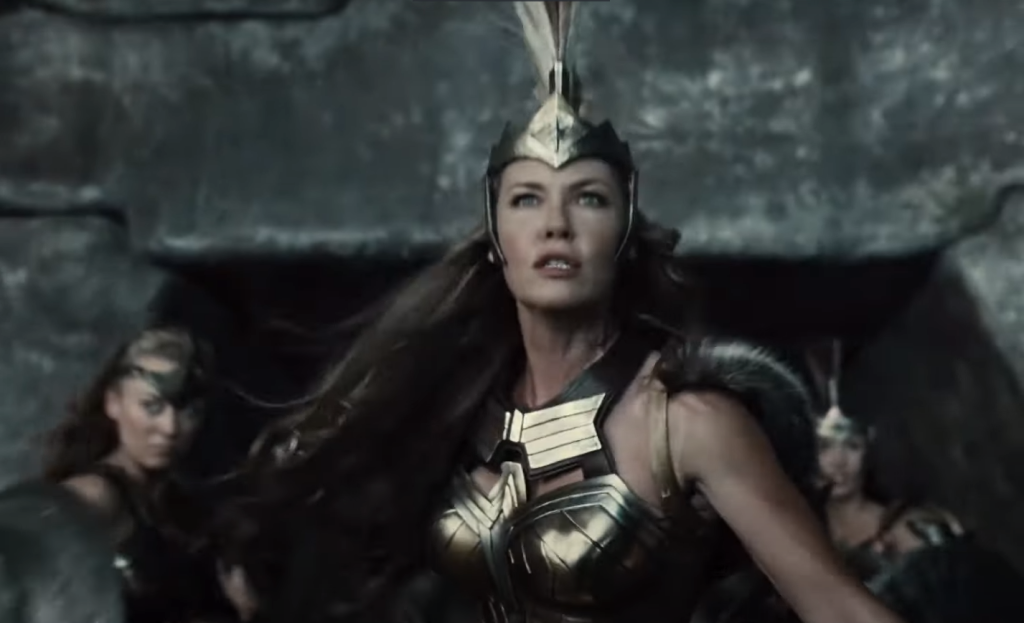
The Amazons
While Wonder Woman’s scenes in the Snyder Cut largely remain the same, the Amazons are given subtle but fierce new texture in their few added moments.
The movie opens with the Amazons tirelessly on guard when the Mother Box awakens. The next time we see them, Queen Hippolyta (Connie Nielsen) is arriving to inspect the phenomenon for a prolonged build-up to Steppenwolf’s attack. When one soldier tells their Queen maybe the box will go back to sleep, Hippolyta remarks, “Evil doesn’t sleep. It waits.”
Steppenwolf eventually attacks, leading to one of the best moments in the Snyder Cut. When he says his Parademons will feed off their fear, Hippolyta calls to her Amazons, “Daughters of Themyscira, show him your fear!” In a tribal yell matched by Junkie XL’s score, they chant back, “We have no fear!” Slaughter commences.
The battle is much bigger and more reliant on slow-motion, including shots of Hippolyta flipping off walls and hesitating to bury the other Amazonians alive. Yep, when she tells her sisters to seal the cave, it’s a death trap. The door collapses, and then the whole structure also falls into the sea. There is then A. Long. Beat. of Hippolyta thinking she’s killed Steppenwolf before he and his Parademons ascend from the sea to slaughter more of the Amazons.
The Amazonians’ defeat is largely the same, although there is now a long denouement, with the Amazons having a musical prayer that grieves their dead and brings magic to the arrow they’ll fire to warn Diana. The Amazons and Wonder Woman iconography are also much more heavily featured in flashbacks to Darkseid’s first attack on Earth 5,000 years ago. We get better shots of Zeus and Ares (David Thewlis from Wonder Woman), and Amazonian Venelia (Doutzen Kroes) being filmed like she’s one of Snyder’s 300 Spartans in the ancient war. But all of that is just background for…
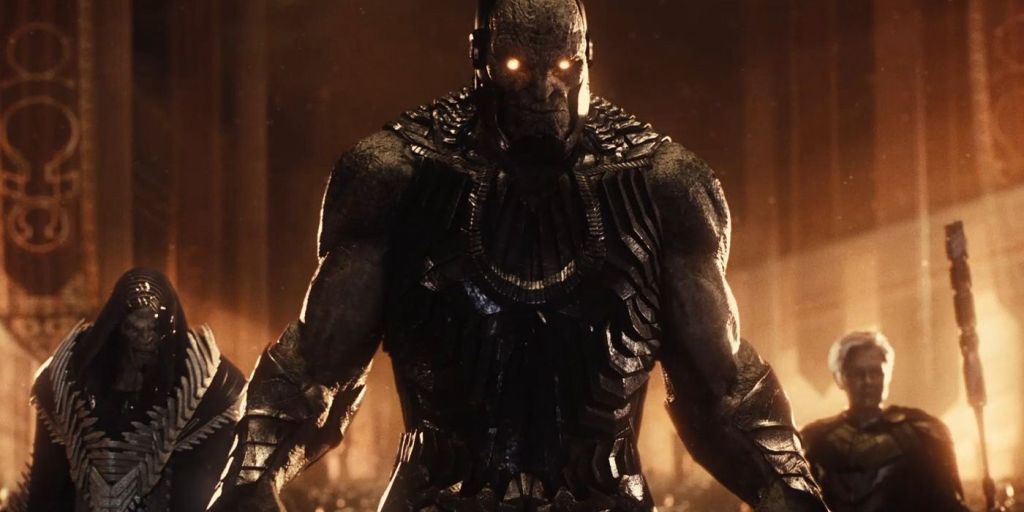
Steppenwolf and Darkseid
Steppenwolf is one of the most dramatically improved characters in Zack Snyder’s Justice League. Beyond more spikes being added to his armor (and his chin being slightly shrunken from its ridiculous size), the Ciarán Hinds-voiced baddie’s motivations are wholly different. In the Whedon Cut, he was a generic “conquer the world” supervillain who was defeated thousands of years ago on Earth by an alliance of men, Amazonians, and Atlanteans. He then returns and refers to his Mother Boxes as “mother.”
While he still chases magic boxes he wants to use to conquer the world in the Snyder Cut, he’s at least a little more nuanced and a lot more despairing toward the whole endeavor. Steppenwolf is revealed to be a meek middle management malcontent with dreams of coming home. As we eventually learn in dialogue exchanges over BvS’ weird molten metal intergalactic telecommunication technology, Steppenwolf is a pariah back home on the planet Apokolips. Long ago, he was party to a failed coup against comic book creator Jack Kirby’s ultimate space fascist, Darkseid (Ray Porter). Think Thanos before there was a Thanos.
“I fall before you,” Steppenwolf moans during his first conversation with Darkseid’s minion DeSaad (Peter Guinness). “Let me make a plea that I may come home after I take this world in [Darkseid’s] name.” But DeSaad will not hear it, saying Steppenwolf is basically on probation for helping an attempted coup against Darkseid millennia ago, even if Steppenwolf then changed sides and killed Darkseid’s other betrayers. Now Steppenwolf has a debt of a 150,000 worlds he must conquer in Darkseid’s name if he wishes to return home.
Basically, Steppenwolf is a putz. Hence he can be both menacing and pathetic when he first attacks the Amazons and remarks of them, with a hint of resigned boredom, “Defenders? Defenders have failed a hundred thousand worlds. They always fail.” And it’s with exhaustion he decides to create his home base on an irradiated scrap of Russian land because it’s toxic.
Read more
Darkseid, by contrast, is introduced to be Emperor Palpatine meets Sauron. Aye, there’s a real Lord of the Rings level of ambition to Diana’s flashback to the Age of Heroes. Rather than Steppenwolf, it’s Darkseid who first steps foot on Earth, turning some of the soil into the scorched cursive hellscape that Kirby fans will be intimately familiar with. We also get a better look of his foes, including an alien Green Lantern whom Darkseid personally kills by cutting off his hand. The green ring flies away before the fiend can grab it.
The sequence is filmed to mirror the opening moments of The Fellowship of the Ring, with Darkseid’s defeat harkening back to the glorious day the people of Middle-earth were victorious. However, personally speaking, it doesn’t reach that height, with Darkseid coming off like more of an overpowered Orc who’s out-flexed by Ares. Yep, David Thewlis’ villain from Wonder Woman is revealed to be the guy who whoops Darkseid’s ass in the end, planting an axe in his shoulder blade and leading the Greatest Evil to be carried from the battlefield, screaming.
Much later in the movie, Darkseid is introduced properly when Steppenwolf reveals he’s learned Earth is home to the Anti-Life Equation. It’s a pretty vague secondary MacGuffin in the context of the Snyder Cut, although Steppenwolf says it would give Darkseid power over the multiverse—it’s unclear why Darkseid did not know it was on Earth when he lost to Ares and the band of heroes, or why he never could come back for it.
However, Darkseid then appears on the telecom with Steppenwolf, causing the Spiked One to take off his armor for the first time and show his bare flesh in fealty to his space dictator. Darkseid promises Steppenwolf he can come home once he’s taken Earth and brings Darkseid the Anti-Life Equation.
We also get a glimpse of how Darkseid plans to use it. Elsewhere in the movie, Cyborg has an inexplicable vision the moment right before a Mother Box is used to bring Superman back from the dead: It’s of an Armageddon much darker than the Knightmare scene in Batman v Superman. The sequence begins with the Amazons finally off Themyscira. They’re burning Wonder Woman in a funeral pyre after putting two coins on her eyes for the boatmen. Hippolyta cries.
Elsewhere in a montage, Superman grieves over the scorched body that can only be Lois Lane (Amy Adams) and Darkseid appears to place a not-so-comforting hand on his shoulder. Later we see the ruins of the Hall of Justice that diehard Superfriends fans will recognize, with an evil Superman flying over it with heat ray eyes. Finally, we see Darkseid himself murder Aquaman with his own trident…
This appears to be an inevitable future of “the Snyder Verse.”

Aquaman
But that is not the destination of the current film. The Snyder Cut, after all, has to lay a lot of groundwork that’ll make us care about these characters in the here and now.
Aquaman is the first to get that treatment in his early scene with Bruce Wayne (detailed more above). The Whedon Cut includes Arthur Curry saying, “You’re out of your mind, Bruce Wayne” as he gets into freezing cold water to swim away. In the Snyder Cut, we don’t see him shoot off. Rather Arthur disappears quietly beneath bubbles between shots. Snyder’s desire to emphasize the godlike wonder of these characters is then underlined in neon when several villagers see him off by singing a worshipful Icelandic hymn in Aquaman’s honor.
If the point is missed, after several minutes of crooning, one woman walks up to caress the sweater Aquaman took off and sniff it, savoring his undoubtedly godlike musk.
The sequence of Aquaman saving a crew from a shipwreck is almost exactly the same in the Snyder Cut, although there are no added jokes about him calling the captain “Ahab” in the bar. Additionally, there’s a really nice grace note of Nick Cave and the Bad Seeds’ “There is a Kingdom” playing when Aquaman goes to brood stoically before a raging storm. It’s exactly the same as in the Whedon Cut, but Whedon makes it generic blockbuster filler with a White Stripes song playing in the background. Snyder goes for a mournful, reflective tone that resembles the better elements of his version of Justice League.
Afterward Aquaman makes his first of two trips to Atlantis in the film—meeting Vulko (Willem Dafoe) in a scene that was entirely deleted. It turns out the effect of Atlalnteans only talking in air bubbles was always a Snyder affectation, although what was lost in the Whedon Cut (and eventual Aquaman movie) is that all the properly born Atlanteans speak with English accents. Dafoe’s Vulko is a bit hammier, seeming adjacent to Dafoe’s wonderful turn in The Lighthouse. But Amber Heard’s Mera speaking her lines in a purely Posh London accent after a whole movie of her using an American one in Aquaman is a real trip.
Read more
What brings Arthur back the second time is Steppenwolf diving below the waves for the Mother Box. He learns of its location (which is unexplained in the Whedon Cut) by torturing Atlanteans whom Parademons have dragged from the ocean, reading the water dwellers’ minds with some gruesome sci-fi spider robot.
Steppenwolf’s actual attack on Atlantis is much more coherent in the Snyder Cut. With action beats given time to pause, and Steppenwolf’s surprise appearance underwater less hilariously cringe-inducing. Mera also gets a cool moment where the villain has her pushed against the wall and says she can’t run away, “I wasn’t trying to,” she responds. Previously, we saw her use superpowers to suck water out of air pockets; now she uses it to suck the blood out of Steppenwolf’s face. He of course throws her back into the water and almost kills her if not for Arthur’s chivalrous, splash-page rescue of his future love interest.
Most of Aquaman’s subsequent scenes play out the same, although he is much less brutish and frat bro-y. There are at least three fewer “yeahs” and “alrights!,” and there is no scene of him sitting on Wonder Woman’s Lasso of Truth, blurting out he’s scared and horny at the same time.

The Flash
Interestingly, the Flash is both the least developed of the superheroes in the Snyder Cut and also the most unchanged by Whedon. It appears that Ezra Miller’s seemingly improvised humor was the element of least importance to Snyder, and the most useful thing Snyder filmed for Whedon’s purposes.
Maybe that’s why the Flash’s first scene in the Snyder Cut does not occur until nearly 70 minutes into the film. It’s also a wholly different introduction scene to what we saw in the theatrical cut. In the restored sequence, Barry Allen is applying for a job as a dog groomer at a pet shop when the unnamed woman who just left—or as fans know her, Iris West (Kiersey Clemons)—is almost pancaked by a semi-truck. The driver, in a rather crude cliché, is a simpleton reaching for his food on the cab’s floor when he slams into Iris’ convertible.
Luckily, Barry sees it coming and slows things down for another somber needle drop on the soundtrack. The whole thing plays like a more wistful, alternative rock version to one of Quicksilver’s big scenes in the X-Men movies. In extreme slow-motion, Barry catches a hot dog from an exploding hot dog vendor, placing it in his pocket, and then catches Iris out of her shattered car. When time returns to normal, Iris realizes she was saved by this cute dork, who then rushes back in time for the pet shop owner to be unsure who broke her window in the blink of an eye. Barry’s feeding the hot dog to her canines.
Otherwise, by and large, the Flash’s scenes remain the same until near the end. Snyder has removed Whedon’s unfunny addition of Barry drawing glasses on the eyes of someone in line while waiting to see his dad at prison, but the Miller/Billy Crudup scene remains the same but longer. Bruce Wayne still breaks into Barry’s loft and tells Barry his superpower is that “I’m rich.”
In the Striker Island action sequence, rather than “save one,” the Flash leads an exodus of civilians to the surface. And when debris nearly falls on them, he creates a shield by running so fast he looks like lightning in the sky blocking the falling rubble. He also is wounded by a Parademon laser blast so sharp it leaves him bleeding from the side of his leg, temporarily hobbled.
The one significant change before the climax is Barry and Victor digging up Clark Kent’s grave. It’s a sincerely quiet moment that (Wonder Woman leering aside) is refreshingly earnest and hushed for a superhero movie.
“I could do this in a second,” Barry says. Victor responds, “Yeah.” The implication is they should take their time and give Superman the honor he deserves. After his body is exhumed and wrapped up, Barry says, “He was my hero.”
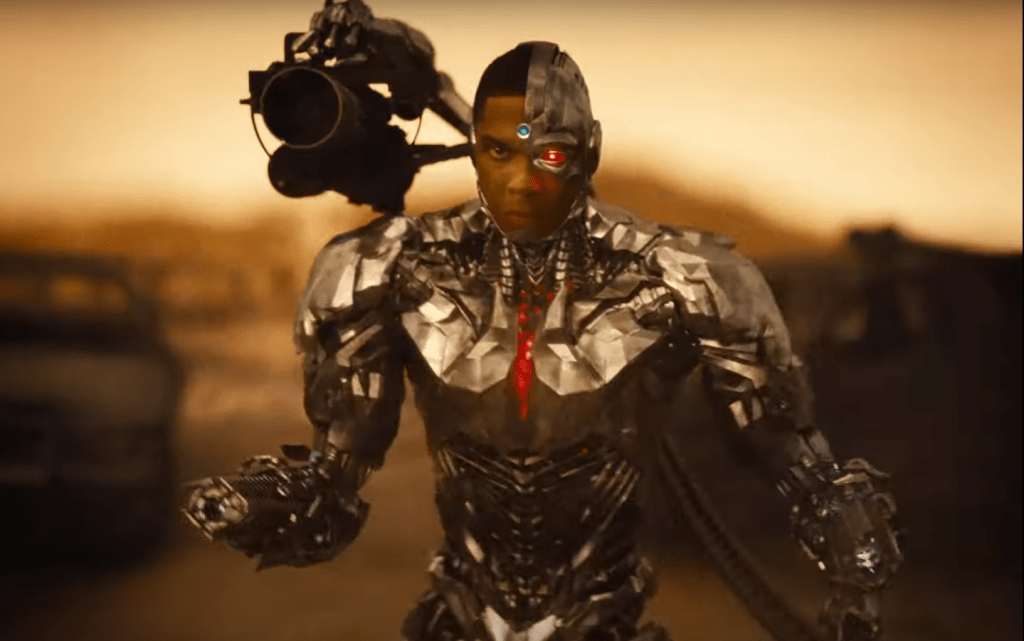
Cyborg
Of the main five heroes in Justice League, Cyborg turned out to be the most important by far. Whatever occurred behind the scenes between Whedon, the producers, and Fisher, the actor had reason to be frustrated simply because his character arc was removed. In its place, he was forced to say, “Booyah.”
The Snyder Cut restores Victor Stone/Cyborg’s importance from the opening credits onward. It begins by basking in what isn’t sad between Victor and his father Dr. Silas Stone (Joe Morton). Initially, we spend more time with Silas, as the father throws himself into his work at STAR Labs to better understand the Mother Boxes.
Eventually, Cyborg gets his own flashback to a time when he was more man than machine. Under an aching musical theme written by Junkie XL, it’s revealed Victor was a gifted genius (his dean even says so!) at Gotham University. Victor is so intelligent, while also being a football star, that he can get away with hacking into the school’s database and changing a friend’s grades.
We also meet his mother who defends her son’s kind heart from the dean in a sequence that’s intercut with his slow-motion football glory, plus a side of melancholy because daddy wasn’t there. Only mom shows up for the game. Afterward they argue in the car about whether Dad really cares about Victor. A car is then seen rushing (unsurprisingly) into frame, T-Boning their car.
The process of Victor becoming Cyborg is only hinted at in scenes through various other flashbacks. But we do see Silas being told his wife is dead and that he’ll soon have to let his son go, too. Hence the bad blood between the two nearly throughout the Snyder Cut’s whole four hours. When we see Silas come home to Victor at their apartment, the son will not even speak to his father. Instead he reluctantly agrees to listen to a recording his father left for him. On the tape, Silas tells his son that the fate of the entire world is now “in your hands, Vic.”
Thanks to the alien technology of the Mother Box used to resurrect Cyborg, Victor has superpowers, which we see him fumblingly try out by flying on his father’s Gotham rooftop. But that’s “just the tip of the tip” of the iceberg, according to Silas’ voiceover. Victor’s high-end computer body now gives him the ability to control the world’s nuclear arsenals and the world’s economy.
This is visualized in a CGI mind palace created in Cybrog’s digital brain. There Fisher gets to play Victor as whole, and without a red eye. Some of it is effective, like floating missiles above his head. Other bits are just ludicrous, like financial markets being personified by a CGI bear slapping a CGI bull. It’s… weird.
But there are nice elements too, like Victor choosing to use his superpowers to see folks suffering, and giving a struggling single mother $150,000 out of an ATM machine. Through it all, he remains hooded and lonely, catching glimpses of people staring at his glowing countenance. It’s why he destroys his father’s recording when Dad tries to stop talking about Cyborg’s powers and instead address Vic as a loving father.
What draws Victor out of his proverbial cave is of course his father being kidnapped by Parademons. He seeks Diana Prince’s counsel but ignores her when she says his powers are a gift—I did miss the line, “If these are gifts why am I always the one paying for them?” Still, as in the Whedon Cut, he shows up on GCPD’s rooftop to join the team.
The one big addition during all the fighting is that when Cyborg flies now, his famous comic book face armor that protects everything but his red eye is finally used on screen. Plus he gets to save his father. Silas is shocked his son came for him, but Victor only says, “You’re my father.” Nothing more needs to be said.
After the Striker Island fight, however, Victor again takes center stage when Aquaman accuses him of possibly being compromised by his alien tech body. Cyborg reveals in a visual flashback, which Victor walks through in his mind palace, that the Mother Box was acquired by the Allies during World War II, taken from the Nazis’ collection of occult goodies in 1944. For nearly a century, it sat undisturbed in the Department of Defense until his father Silas realized it was similar to the technology used by the Kryptonian ship in downtown Metropolis.
That’s how Silas discovered its power, and in a horrifying flashback, he uses it when he looks at his son’s body on a slab, Vic’s lower torso gone. When Silas uses the magic box on Victor, the son screams bloody murder.
It is Victor Stone who puts the pieces together for the nascent Justice League and gets the heroes to begin acting like a real team. He puts together for the others that the Mother Box can be used to bring Superman back from the dead, and projects an image of Big Boy Blue for everyone to see.
Vic leads the team into STAR Labs to do the deed. And when Silas sees his son, still not talking to him, walk by with Batman and other weirdos, Dad doesn’t call it in. In fact, Vic and Silas are why the heroes win in this version, because after the Superman resurrection is bolloxed up, and Steppenwolf arrives to retrieve the third Mother Box, rather than run away, Silas sacrifices himself by heating the box with a laser so hot, that Batman can conveniently track wherever it goes in the world.
One could argue Cyborg was the most crucial of the heroes in organizing a true team team. Well, him and the legacy of another…
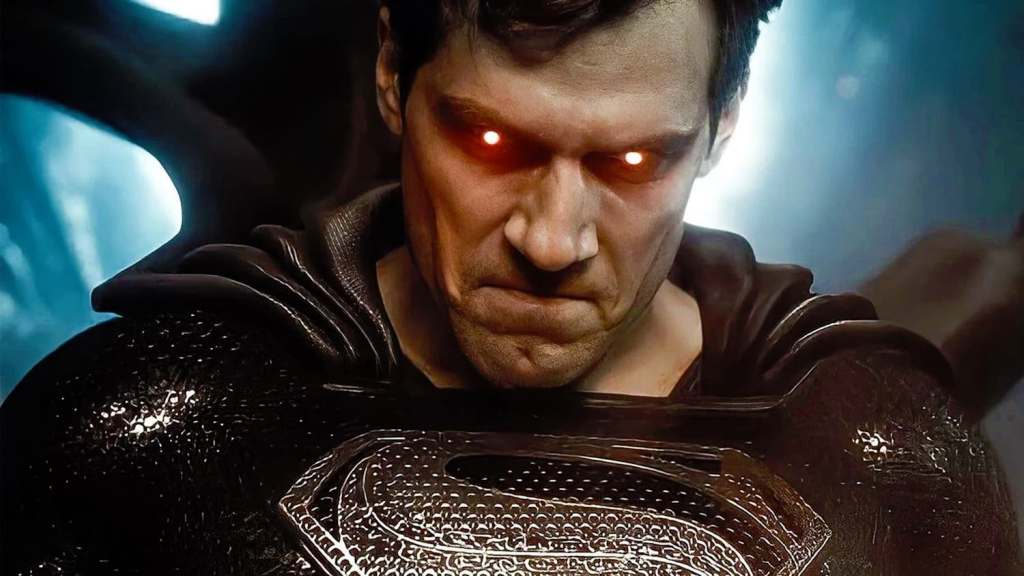
Superman
One imagines Superman’s treatment by Snyder and screenwriter Chris Terrio in what we now call the Snyder Cut, and Batman v Superman before it, played a major role in Warners’ eventual lack of confidence in the filmmakers. The beginning of the Whedon Cut even starts by course correcting where Whedon might’ve thought Snyder went wrong. Hence the awkward smartphone video of Superman talking to some children with a big smile on his face (and mustache unconvincingly erased from it).
Honestly, though? The depiction of Superman in the Snyder Cut is at times quite heroic and sweet. Certainly sweeter than the abysmal “no one stays good forever in this world” line of dialogue from BvS. However, there are major caveats.
Someone who unequivocally benefits from the new version is Amy Adams’ Lois Lane. While she again has relatively little to do, the rare moments where she is on screen in the Snyder Cut count a hell of a lot more. For starters, there is a genuinely heartfelt sequence about grief—one that it’s fair to wonder if Snyder has added special emphasis to. We follow Lois as she begins her morning routine by getting out of bed, buying a cup of coffee, and going to spend an hour or so at Superman’s memorial in downtown Metropolis.
The soundtrack plays Nick Cave and the Bad Seeds’ “Distant Sky,” and the scene bleeds a dignified sorrow as Lois unfurls her umbrella in the rain and walks up to Superman’s memorial to lay flowers. The cop she gives her morning coffee to asks Miss Lane if she ever skips a day, and she says there’s nowhere else she’d rather be. This is the transition to the Superman flag in London.
Afterward Lois goes nearly two hours before appearing again in the film, while Diane Lane’s Ma Kent (who is seen early in the picture leaving home) vanishes for well over that amount of time. It makes their reunion scene in Lois’ apartment feel awkward and obligatory after such a long pause, but the restored scene is still better than the “Clark told me you were the thirstiest girl he ever met” in the Whedon Cut. At least until the Ma Kent of this scene is pointlessly revealed to be Martian Manhunter. (Sigh.) It’s almost as bad a bit of forced world-building as future Barry Allen warning Batman about Lois Lane in BvS.
Meanwhile the League all comes to the idea of resurrecting Superman at the same time, and there are no second guesses other than Alfred’s skepticism. Thus begins a resurrection sequence where it’s genuinely affecting to hear Zimmer’s Superman theme again as Kal-El’s body is placed into the Kryptonian ships goo-room. Similarly, Snyder achieves another grace moment when Lois sees Superman flying in the sky right after his resurrection. Before this moment, Lois made the decision in bed that morning for this to be the last time she’d visit and grieve Superman’s death at the memorial. We’re also teased to the fact she keeps a pregnancy test on the nightstand. So she made her final trip to his memorial.
And on the same day, Superman came back.
Read more
Unfortunately, his return is much the same as it was in the Whedon Cut, with the gloomy gray cinematography and the outright sinister version of Superman who’s apparently forgotten his identity. In fact, he’s more menacing than the familiar footage of him smacking down Wonder Woman and Aquaman. Now he takes time to study his monument before still coldly attacking the other superheroes and using his heat ray vision to try and murder U.S. soldiers stationed by his memorial.
If not for the interference of Batman, Superman would’ve killed servicemen. For what it’s worth though, he tries to kill Batman too. Gone is the “do you bleed?” callback to the previou cut. Instead Superman uses his heat ray vision to try and cook Batman inside his own cowl—which is only stopped by Bruce’s special “energy absorption” gauntlets.
As with the Whedon Cut, Bruce’s death is prevented when Lois shows up, but now of her own volition, and she and Clark fly away to Smallville. And once there, Superman’s soul returns and we get nice Americana scenes of Clark Kent watching a butterfly land on his hand, and Lois joining him in the wheat field.
“I’ll take that as a yes,” he says of the engagement ring he planned to give her before his death, and which she keeps on her hand. Soon Ma Kent joins them and it’s a lovely moment of reconciliation with the women in his life. It’s also far more emotionally effective than the version of Lois apologizing to Clark for “not being strong” after he died in the Whedon Cut.
And yet… it’s compromised by the constant foreshadowing of another heel turn in Superman’s future. The Kryptonian ship keeps warning, pleading even, with Cyborg that there is “no turning back from this action” as he prepares to resurrect Superman. Only then does he have a vision of an evil Kal-El drifting over a smoldering Metropolis. This muddle created by these conflicting sensibilities—folksy domesticity versus foreboding doom—do not mesh. At all.
At the very least, Clark returns to the Kryptonian ship to find there was a black Superman suit hidden all along in the corner. Additionally, he hears both of his dads’ voices, Jor-El (Russell Crowe) and Pa Kent (Kevin Costner). Some of it is old audio about “they’ll join you in the sun” from Man of Steel. Some of it is new recordings, which don’t really make sense as both men are dead. But we hear Pa repeat, “Fly son” and Jor-El intone, “Love them as we loved you.”
Black-suited Superman then flies into the orbit, taking the same Christ pose he had in Man of Steel, visually suggesting the Lord is risen, hallelujah. Superman then flies to the Batcave and meets Alfred, who tells him where to go… for the end of things.
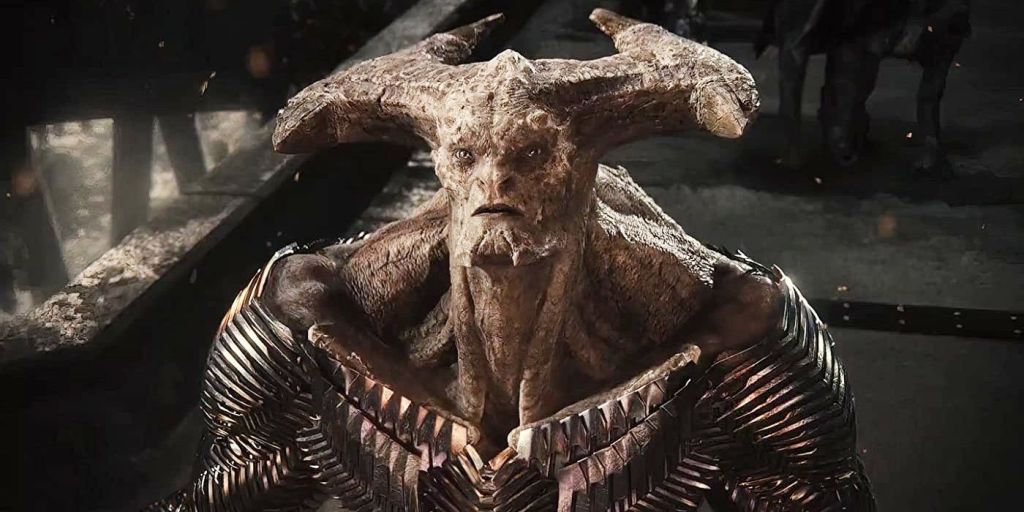
The Ending
It is the ending, when everyone comes together, where the Whedon Cut and Snyder Cut perhaps most definitively diverge. It’s still technically the same ending: the five main members of the League show up in a nondescript Russian town to fight Parademons. Superman returns at a desperate moment and they all prevent the Mother Boxes from becoming one ungodly MacGuffin that would destroy Earth, knocking Steppenwolf on his CG ass.
Yet how these elements are incorporated, and where they leave the DC Extended Universe, are like on different planes of existence. From the top, the gore level (as with the Striker Island fight) is just more extreme in the Snyder Cut. Batman shoots Parademons with his Batmobile and then later uses the aliens’ own plasma guns against them; Wonder Woman beheads and cripples more computer generated baddies than all the armies of Gondor combined. Even Aquaman’s trident tastes blood.
There is also a much stronger sense of teamwork in the Snyder Cut. Batman’s suicide play of driving headlong into carnage makes more sense in this version as he crashes his plane into one of Steppenwolf’s magical machines, which brings down a force field and lets the team enter beneath the villain’s dome. And instead of Wonder Woman coming alone to Batman’s rescue, the whole team fights alongside his Batmobile for a freeze frame worthy of a splash page. It really is bizarre that Whedon, who was so good at these kinds of images in his Avengers movies, took this one out.
Once inside Steppenwolf’s evil lair, things are also far more exciting. There are no civilians (or randomly shoehorned in Russian family) to save. But there are enormous stakes as Cyborg has to stop the Boxes by merging with them. In the process, he enters his proverbial mind palace to face the three boxes in the flesh, as they’ve turned into literal witch crones. At first they appear as his dead parents, promising mom is ready to be reunited with her “broken boy,” but it’s a ruse that torments Victor to an even greater degree.
Meanwhile Steppenwolf has opened a Boom Tube portal to Apokolips where Darkseid, DeSaad, and Granny Goodness are waiting to take over Earth and claim the Anti-Life Equation. It was always “save the world” stakes in both versions, but you actually feel them in the Snyder Cut, particularly since… the heroes fail.
In a development that maybe would’ve left a Flash solo movie with nowhere to go, Darkseid and Steppenwolf briefly win, the three Mother Boxes merging despite Cyborg’s best efforts. The world instantly begins being ripped apart by a CG blur which presumably will turn Earth into a hellscape. The Flash, who is further afield from the action and bleeding from a gruesome wound in the side of his stomach, knows he has only one choice: to run backwards in time fast enough to reverse the flow of time.
It’s a trick that is expected to play heavily in DC Films’ upcoming Flashpoint inspired film, and Barry executes it here to undo the heroes’ defeat. Running into a seeming tornado of blue computer generated lightning, Barry undoes the damage and gives Cyborg a little more time, with Superman’s help, to stop the boxes from combining.
The action prevents the world’s end and allows Aquaman to skewer Steppenwolf like a fish on a hook. In the Whedon Cut, Steppenwolf is slashed by Wonder Woman and unsatisfyingly undone by becoming so fearful that he triggers his Parademons’ scent, and they eat him alive. Essentially, it’s a dippy retread of The Lion King where Scar is devoured by his own hyenas.
While certainly more bloodthirsty, there’s no denying there’s a satisfaction in Aquaman stabbing Steppenwolf, Superman punching him, and finally Wonder Woman beheading him. That is justice for her fallen Amazonian sisters.
Afterward, the whole direction of the DCEU still pivots toward darkness in Snyder’s vision. The Boom Tube to Apokolips stays open long enough for Steppenwolf’s head to return home. Darkseid crushes it beneath his foot. He also accepts that, for whatever reason, they cannot reach Earth through the Boom Tubes due to this defeat. “We will do things the old way,” Darkseid hisses. He summons the armada to head to Earth, setting up a very different future for the DCEU.
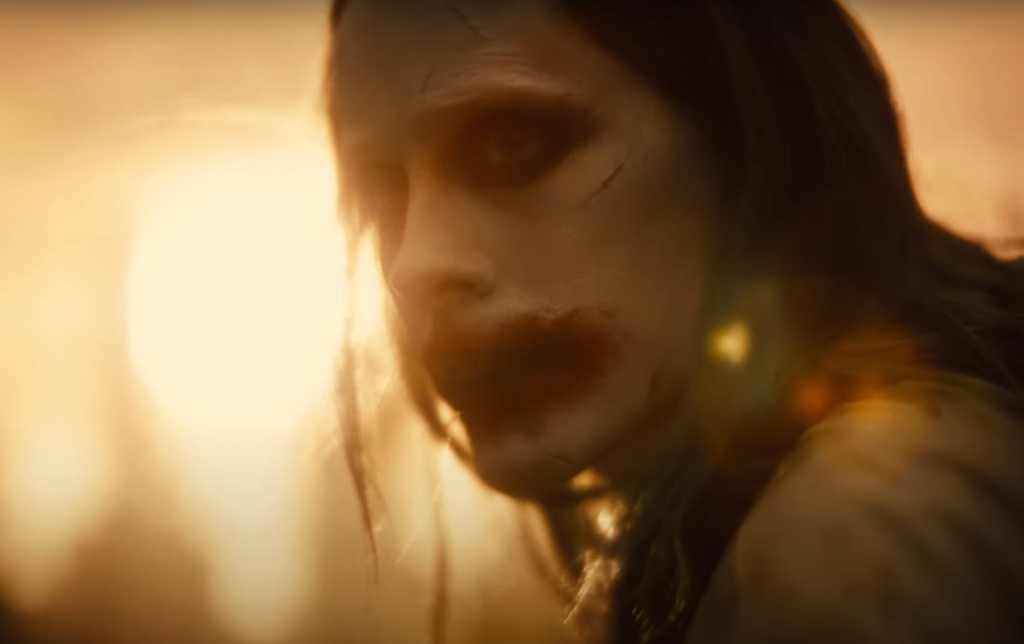
Epilogue
Continuing on the divergent paths between the Whedon and Snyder Cuts, the epilogue of the latter (complete with a title card) essentially presents the road not taken in the DCEU. Many of the elements we saw in the Whedon Cut remain, such as Bruce and Diana opening up Wayne Manor to become the headquarters for the Justice League by building a table “with room for more;” we also see Barry tell his incarcerated Dad he got a job at the Central City crime lab; and of course there’s Superman’s beloved shirt rip.
However, there’s so much more added on by Snyder. Some of it is very intriguing, such as Diana taking the arrow from her mother and looking out at the horizon of the Aegean Sea by the Temple of the Amazons. The implication is she’s begun yearning to return home. Could this have once been the plot thread of Wonder Woman 2? Could it still become the plot thread of Wonder Woman 3?
The most effective element is, again, Cyborg as he reconstructs his father’s broken audio recording and hears Silas’ love as a “father twice over.” It’s bittersweet Victor never got to verbally reconcile with his papa, but just saying, “You’re my father” might’ve been enough.
Read more
Yet the epilogue ultimately becomes a teaser for what Snyder’s original vision for a Justice League trilogy might’ve looked like. In the Whedon Cut, the sequence of Lex Luthor on a yacht with Deathstroke (Joe Manganiello) comes as a post-credit sequence. In the Snyder Cut, it’s part of the body of the story. The build-up to Lex’s escape is longer, and once on the yacht he has no quippy joke about “forming a league of our own.” But he does tell Deathstroke that Batman’s secret identity is Bruce Wayne.
That captures Deathstroke’s attention and seems to set up potentially catastrophic events for Bruce’s future in Affleck’s now defunct The Batman movie. It also would appear to further set up the Legion of Doom Justice League sequel with Deathstroke and Luthor.
But that’s pittance compared to the far bigger stinger for the future. In one more “Knightmare,” and another vision of a future where Darkseid has turned Earth into a Mad Max apocalypse, we once more see Affleck’s Batman as a road warrior in a desert, this time with Amber Heard’s Mera, the Flash, Deathstroke, and Cyborg as his road trip buddies. Clearly Cyborg’s vision earlier in the film came to pass, with Mera swearing she’ll kill Darkseid in order to avenge Arthur.
The biggest bombshell here though is that this is where Jared Leto reprises his performance as the Joker. I wish I could say it was better than this grubby, grinning, awkward reshoot moment where he talks about giving the Batman a reach around. Bruce’s dialogue isn’t much better as he mumbles, “When I held Harley Quinn, and she was bleeding and dying, she begged me with her last breath that when I killed you—and make no mistake I will fucking kill you—that I do it slow.”
We’re a long way from Adam West, eh? The sequence ends with Evil Superman appearing with heat ray vision, coming to kill all of them. This clearly stands as a trailer for Justice League sequels that almost certainly will never be. It’s also a vision for the Justice League trilogy Snyder originally planned with Terrio that’s making its rounds across the internet. Part III was meant to be about Batman and the Flash in the ruins of a destroyed Earth traveling back in time so Batman could make sure that Lois Lane never died—sacrificing his life so Superman never turned to evil. Again.
I can’t say this scene adds a lot to this movie, any more than the final, final tease of Harry Lennix’s Martian Manhunter showing up one more random time to give Bruce Wayne a pat on the shoulder. He says your parents would be proud of you and that he wants to join his team. Affleck’s Bruce is strangely not perplexed by any of this and gives off a general “Cool story, bro” vibe.
Martian Manhunter travels into a future we will never see, setting up a sequel that has been abandoned. It’s a shame, but it is so brazenly, defiantly Snyder’s vision—and so far removed from the Whedon Cut’s goofy ending on Superman and Batman having a happy go lucky race to the Pacific—that one can at least give this to to the director: He did it his way. There’s something to be said about that.
